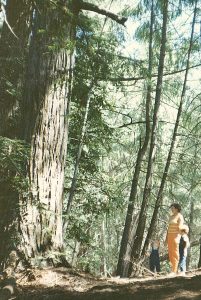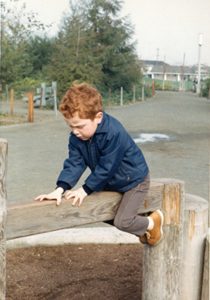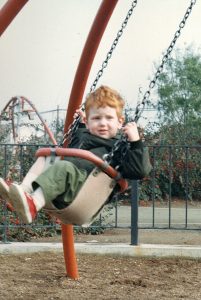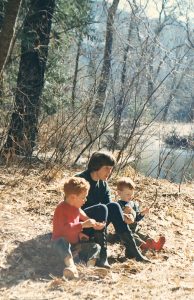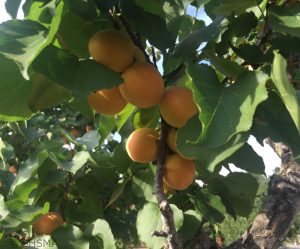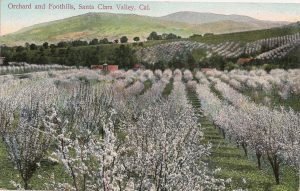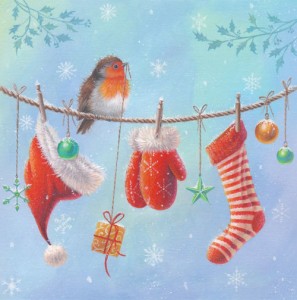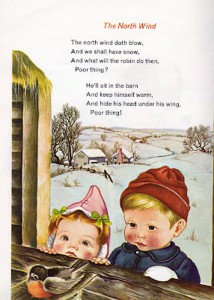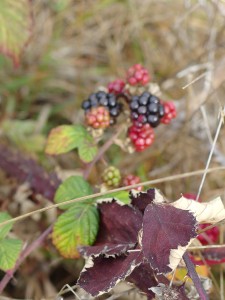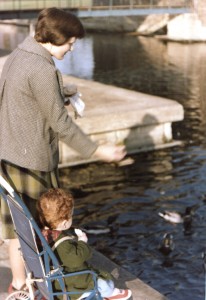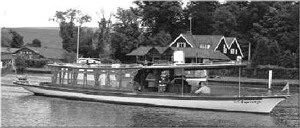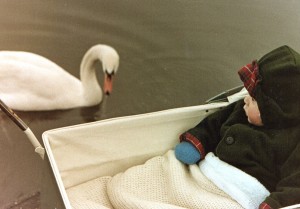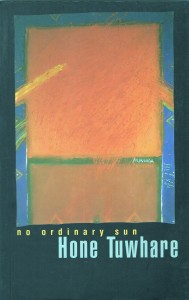Archive for the ‘nature’ Category
In Praise of Parks
Having spent all their little lives in a place where parks had prim Keep Off The Grass signs and irate men in bowler hats with sticks enforced The Rules, my children were enchanted to discover the parks and playgrounds of their new home.
In the 1967, when we arrived in California from England, California State Parks was going through a huge expansion. Appropriations from the General Fund and a 1964 recreation bond provided well over a hundred million dollars for land acquisition and development. The government budget analysis for 1967 comments:
In the immediate future, the most pressing need of the state park system will be to provide funds for access and minimum development to enable the public to use lands now owned or currently being acquired. The existing state park system has a potential for development of about four times that of existing facilities.
With an expanding population, local governments in the Santa Clara Valley were also opening new parks and playgrounds as rapidly as they could. It was a fine time to be kids. They had their choice of playgrounds within easy driving distance: the one with the great swings, or the one with the good bars to climb on?
Cooking out at a forest park was one of our favorite activities. We bought a cheap little hibachi, loaded up a picnic and were off to explore.
At weekends, if the weather was hot in the valley, we might go over the Santa Cruz Mountains to the beach, remembering to take warm jackets since the fog was likely to roll in. Again choices, choices: Pescadero State Beach, or San Gregorio, or Half Moon Bay, Natural Bridges, Seacliff, Manresa…? Well before the California Coastal Act of 1976 declared that the permanent protection of the state’s natural and scenic resources is a paramount concern to present and future residents of the state and nation and that it is necessary to protect the ecological balance of the coastal zone and prevent its deterioration and destruction, the beach parks in our part of the state were already a beloved treasure.
Looking back, I recognize how innocent we were about land use politics, environmental pollution issues, climate change. Now more than ever, those parks and beaches, and the creatures living in them, need our support.
They paved paradise
Golden fruit clings to leafy branches. Golden-skinned men climb orchard ladders, old metal harvesting pails in hand. Close to the road, a huge billboard: FOR SALE FOR COMMERCIAL DEVELOPMENT. The scene has stayed in my mind, my first introduction to the landscape of my new home.
I moved, with husband and children, to Cupertino, in Santa Clara County, California, in late May of 1967, just as the apricot harvest was beginning. Between our apartment, off N. Blaney Ave. by Interstate 280, and the nearest food market, on Stevens Creek Blvd., was a mile of apricot orchards. In other directions were acres of cherries, almonds and prunes. The Santa Clara Valley, a fertile alluvial plain, was until the 1960s the largest fruit production and packing region in the world. The beauty of all that spring blossom gave rise to the nickname “Valley of Heart’s Delight.”
The post-World War II economic boom and the rise of high-tech industry changed all that. My husband and I were part of a flood of new arrivals that forced out the fruit farmers and replaced orchards with tract houses, shopping centers, and business parks. It was a bittersweet time. On the one hand the energy and excitement of the new technological advances, the sense of living where the future started. On the other, sadness at the destruction of all those beautiful trees. Among my old notes I found a few lines of a poem I wrote in those early years:
The field is bare now where the orchard stood.
Apartment builders hammer at its brink.
How soon do we evict the meadowlarks
that saunter golden in the rainy dusk,
foraging through weeds by the highway’s edge?
In recent decades, with the growth of the environmental movement, there grew a collective sense that something important was being lost. Efforts were made to preserve at least the memory of that fruitful landscape. In 1994, the City of Sunnyvale preserved ten acres of Blenheim apricot trees “to celebrate the important contribution of orchards to the early development of the local economy” and created an interpretive museum beside it.
The Olson family, whose 100-acre cherry orchard was one of the last vestiges of cherry farming in the area, still retains a few acres of trees and the roadside fruit stand that began in 1899. Owner Deborah Olson commented: “We try to educate people just moving in to the area, who don’t know what it’s all about. They get a sense of place, about how it began here, and they kind of feel a part of the community.”
Blogger Lisa Prince Newman, whose family also moved to the valley in the 1960s, is collecting stories, pictures and apricot recipes from the few farming families still in the valley.
The chorus of Joni Mitchell’s song “Big Yellow Taxi,” written in the late 1960s, sums up the sense of profound loss:
Don’t it always seem to go
That you don’t know what you’ve got
Till it’s gone
They paved paradise
And put up a parking lot
Hear Joni sing “Big Yellow Taxi”
Robin redbreast on a fence
I still ponder why it meant so much, that Christmas morning in England in the 1960s, that a robin sat on the back fence. The field behind the fence was white, the fence wires thick with hoar frost, and the little red-breasted bird made the scene perfect. Finally, I told myself, a ‘real’ Christmas.
I have tried for many years to clarify my feelings about the disconnect between the traditional trappings of the season and my experience of growing up in New Zealand, where the seasons are reversed. My childhood Christmas memories are of summer: the tree laden with oranges in my grandmother’s garden where we hung our presents and picnicked on the lawn; the scent of magnolia blossom outside the church on Christmas Eve.
Also the Christmas cards with their images of snow (which I’d never experienced) and yes, the English robin. I knew about robin redbreast from the old nursery rhyme, but until that Christmas I hadn’t seen one.
Now on the coast of Northern California, I have a different understanding of how to celebrate the winter season. Our multicultural society recognizes many winter festival stories and traditions: the birth of Jesus in a stable, the menorah candles of Hannukah, the Swedish light-bringer St. Lucia, the gift-bringer St. Nicholas (known also as Santa Claus), and many others. The celebration that holds the deepest meaning for me now is Winter Solstice, the return of the light. From summer to winter, I note where on the horizon the sun sets, and how the darkness grows. Even as clouds gather, the place where sun disappears into ocean fogbank moves steadily to the south. When the prevailing westerly wind shifts to the southeast, I know to expect the winter rains. Sometimes a shower or two, sometimes, such as this past week, a prolonged deluge that floods rivers, downs power lines, and closes roads.
Meanwhile, the earliest spring flowers are breaking bud, and over-wintering birds gather hungrily at my feeder: Steller’s jay, spotted towhee, hermit thrush, acorn woodpecker, hordes of white-crowned sparrows. I love them dearly. I am happy that I have learned to understand the connection between the flow of seasons and human efforts to explain them with stories and festivals. And I still have a place in my heart for the memory of that cheery robin redbreast who brightened an English winter.
The red stain of near disaster
Whenever I see old blackberry canes, dark red as the stain of their summer juice, I remember blackberrying in England when my son was small, and a dark red guilt sweeps over me. I described our expedition in a letter to parents:
8 Oct 1965
We went blackberrying on St. Ann’s Hill, not far from here. Got a lovely lot—have been busy making jelly, pies, etc. David had a wonderful time—it was so sweet to see the solemn single-mindedness with which he set about collecting his berries—and he didn’t eat a single one until Tony offered him a handful—to comfort him when he tumbled down a slope into a patch of brambles.
Modern American parents would probably be horrified at how lackadaisical we young mothers in England were about supervising our children’s play. Once the daddies were gone to work, our little close of twenty-eight row houses was almost completely free of traffic. The kids, twenty of them under school age, ran in and out of each others’ houses and romped together across the grassy front yards.
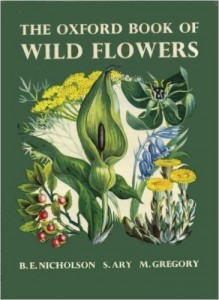 The Monday after our blackberrying expedition, I went out to gather up two-year-old David for lunch. I found him and his little friend in a still-rough corner between the housing blocks. His mouth was stained red. “I picking blackberries, Mummy,” he announced cheerfully. I took one look at the berry-laden plant, then rushed back to the house. My Oxford Book of Wild Flowers confirmed my guess: Deadly Nightshade.
The Monday after our blackberrying expedition, I went out to gather up two-year-old David for lunch. I found him and his little friend in a still-rough corner between the housing blocks. His mouth was stained red. “I picking blackberries, Mummy,” he announced cheerfully. I took one look at the berry-laden plant, then rushed back to the house. My Oxford Book of Wild Flowers confirmed my guess: Deadly Nightshade.
While Tony, who had come home from work for lunch, went to tell the mother of the other child what had happened, I tried everything I knew of to make our baby throw up. Nothing worked. We called an ambulance. Since I was within a week or two of giving birth to our second child, a neighbor, seeing the ambulance, came over to wish us well. I am still grateful that when she learned the story, she called the police, and still guilty it hadn’t occurred to me that other children might be involved. Some days later I wrote to parents:
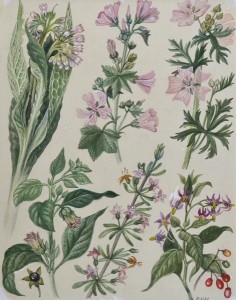
Watercolor illustration by Barbara Nicholson in The Oxford Book of Wildflowers, Oxford University Press, 1960. Shown are: Comfrey, Common Mallow, Musk Mallow, Deadly Nightshade, Duke Of Argyll’s Tea Plant, and Woody Nightshade.
13 Oct. 1965
The police organised all the rest of the kids in the close whose parents couldn’t prove they were somewhere else that morning into another convoy of ambulances for a mass stomach pumping session. About a dozen altogether involved, of which four (including David) were confirmed cases, though they decided to keep the whole lot overnight for observation, just in case.
Meanwhile the newspapers had got hold of the story. We refused to see them at the hospital, but when we got home about 7:00—completely exhausted, & having had nothing to eat since breakfast—we were invaded by a posse of reporters. A highly garbled & exaggerated account appeared the next day. I suppose it’s not every day one makes the front page of the Daily Mail, the Daily Mirror, & the BBC News, but I shouldn’t care for the honour to happen again.
Anyway, the story ended well—all the kids were discharged the next morning, with none but the hospital staff any the worse for wear—in fact the sister-in-charge of the children’s ward where the confirmed cases were confessed that she hadn’t known that four such tiny boys could get so involved in riots and punch-ups all up and down the ward, and they were very pleased to see the back of them.
Ducks and swans and boats, oh my!
My son’s first word was “duck.” This is not surprising. We lived in Windsor, England, downhill from Windsor Castle and a few blocks from the River Thames, a destination for our daily walk.
There was always something to see on the river. Sometimes rowing crews from Eton College, eight oarsmen in a long narrow shell sweeping the water with long strokes, the cox calling the rhythm. Lots of boats. My family’s special favorite was the elegant “Esperanza,” one of the many riverboats that took visitors on trips upriver.
David’s favorites were the ducks. There were hundreds of them on the river, dabbling among the water weeds, bobbing under with their tails in the air, or clustered enthusiastically close to the walkway if we remembered to bring stale bread to throw to them.
The swans were more scary. They were big, and their large beaks looked ready to take a nip if they were feeling feisty.
The swans of course are famous. Some of the mute swans on the Thames belong to the Queen, others to two ancient guilds, the Vintners and the Dyers. Each year, toward the end of July, there occurs a ceremony called Swan Upping, during which Thames swans with cygnets are rounded up by official Swan Uppers, caught, checked for health, marked with the appropriate leg rings, and then released under the direction of the Swan Marker.
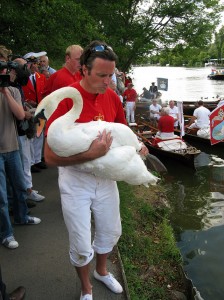
Swan Upper with swan. Photo by Bill Tyne, courtesy of Wikimedia Commons, https://commons.wikimedia.org/w/index.php?curid=29175336
Every day, something new to see.
A Shakespearean ghost and an old tree
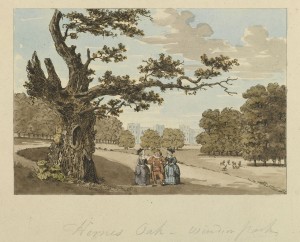
Herne’s Oak, Windsor Park circa 1799
Etching with hand colouring, attributed to Samuel Ireland (1744-1800). The two Merry Wives of Windsor, Mistress Page and Mistress Ford, are standing with Falstaff at Herne’s Oak.
Drawings Gallery, Windsor Castle
Royal Collection Trust/© Her Majesty Queen Elizabeth II 2016
In the grounds of Windsor Castle in England stand thousand-year-old oaks so huge and gnarled and blasted it’s easy to imagine them haunted by spirits. Shakespeare used this conceit in his play “The Merry Wives of Windsor.”
When I was a Windsor wife in the early 1960s , I attended a performance by the Windsor Repertory Theatre of “Merry Wives” one summer evening in the castle gardens. Probably written to amuse Queen Elizabeth I, the play uses as its setting then-familiar Windsor landmarks, such as the 14th century Garter Inn on High Street and Herne’s Oak in Windsor Great Park.
The play centers around the drinker and gambler Sir John Falstaff, known from the plays Henry IV part 1 and part 2. Short of money, he comes to Windsor where he attempts to seduce both Mistress Page and Mistress Ford in hope that at least one of them will share her husband’s wealth with him. He writes each wife an identical letter, but the two women, who are close friends, immediately show each other their letters and are outraged.
The wives decide to teach Falstaff a lesson, and pretend to lead him on while planning his downfall. He is dumped from a laundry basket into the muddy River Thames, and beaten while disguised as the Old Woman of Brentford, who is believed to be a witch. With their husbands in on the secret, they concoct a final revenge for his clumsy insults to their virtue. Mistress Page sets the scene:
There is an old tale goes that Herne the hunter,
Sometime a keeper here in Windsor Forest,
Doth all the winter-time, at still midnight,
Walk round about an oak, with great ragg’d horns;
And there he blasts the tree, and takes the cattle,
And makes milch-kine yield blood, and shakes a chain
In a most hideous and dreadful manner.
You have heard of such a spirit, and well you know
The superstitious idle-headed eld
Receiv’d, and did deliver to our age,
This tale of Herne the hunter for a truth.
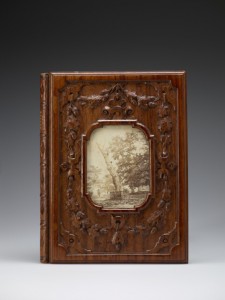
Cover of William Perry’s “A Treatise on the Identity of Herne’s Oak, Shewing the Maiden Tree to Have Been the Real One”
Probably presented to Queen Victoria by William Perry, c. 1867
Drawings Gallery, Windsor Castle
Royal Collection Trust/© Her Majesty Queen Elizabeth II 2016
The Royal Collection website notes:
Perry’s treatise claiming the authenticity of this tree echoed Queen Victoria’s own belief, though his view was not entirely unbiased since he had been given portions of the wood to carve into souvenirs, which include the binding of this book. A photograph of the tree shortly before its fall is inserted in the front board.
Falstaff is induced to dress as the ghost of Herne the Hunter and wait for the two women at Herne’s Oak, where he is pinched and tormented by local children dressed up as fairies.
Since Herne’s Oak has now fallen, exactly which tree it was—the one that fell in 1799 or the one in 1863—remains in dispute. Also unclear and undocumented are the origins of the myths about Herne the Hunter. Shakespeare was the first writer to mention him. His purported connection to ancient archetypes representing the primal power of nature may be an artifact of Victorian story-makers. Some evidence suggests there was a real game-keeper in Windsor Great Park named Herne or Horne, possibly in Elizabeth I’s time, possibly earlier, who, having committed some great offence for which he feared a dreadful punishment, hanged himself on an oak tree. Maybe Mistress Page had it right: the memory of such an event at a scary-looking tree could be enough to start a legend about a ghost.
My first cuckoo
Sumer is icumen in
Lhude sing cuccu
Listen to this Medieval rote song
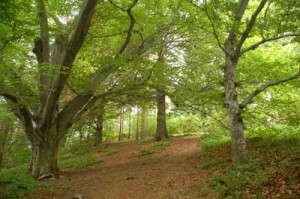
An English oak woodland. Image from Open University on the BBC
My first spring in England, late afternoon in Windsor Great Park. Green-gold light through ancient oaks, the air rich with leaf-mold and violets. A cuckoo calls. I have heard the sound all my life, in music and poems, but never before in the wild.
Listen to the cuckoo calling in this recording from the British Library
As I stand listening, this spring in 1962, something shifts in my thinking. It is as if previously I saw the world through two mesh screens, one named Southern Hemisphere and the other Northern Hemisphere, half a year out of alignment with each other, so that my view was blurred by the moiré patterns their meshes made. The religious festivals my ancestors brought from the northern hemisphere when they emigrated to New Zealand lost their old association with the seasonal cycles of life and death when celebrated in the reversed seasons of the southern hemisphere. In consequence, I felt, even as a child, a subtle sense of having been cut off at the roots, of being, even after several generations, transplanted British.
Images float into my mind. Mid-morning, Christmas Eve, at All Saints Church in Tauranga, NZ. Strewn mounds of flowers deck the chancel steps. The Altar Guild ladies are filling shiny brass vases that stand either side of a red-draped altar. Bronze-purple foliage of copper beech, fans of gladiolus spikes, the tropical exuberance of canna. They add dahlias, roses, bougainvillea until the reds vibrate.
Sunlight through stained glass glitters on the sharp points of holly springs that I strew along the dark wood windowsills, hiding jam jars filled with red geranium flowers. The holly bears no berry here, this time of year, and the carol I hum under my breath echoes in an empty place inside me. Later, at midnight services, the congregation sings of light in darkness and the falling of snow. We emerge to warm air, misty moonlight, and the scent of magnolias. This Christmas is not real, I think to myself. It’s pious make-believe.
Easter: after morning church and family lunch, I gather with siblings and cousins on the porch to smash the Easter eggs we have all been given. Molded of hard sugar, they are pastel pretty, with piped-on decorations of flowers and leaves, the symbols of spring. Having gorged ourselves, we scamper off to scuffle through autumnal leaves.
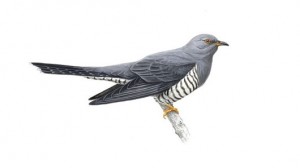
Cuckoo image from
Royal Society for the Protection of Birds
My reading in college, particularly J.G. Frazer’s The Golden Bough, helped me recognize that Christian festivals have pagan roots: the ritual victim dies at planting time; the winter birth is the rebirth of the sun. As the cuckoo calls again, cu-coo, over and over, quietly, the blurred meshes of my hemispheres resolve and I see through: myself and my people bound by tangled apron strings to the life our forbears left, and to the earth itself, an old reality, almost forgotten.
A taonga returns home
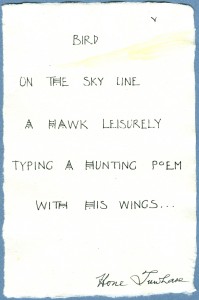 This week, when I fly to New Zealand on a family visit, I will have with me a small sheet of drawing paper. In a top corner is a drawing of a bird flying over a hill, with a delicate watercolor wash. The rest of the sheet contains a tiny poem, hand-written in beautiful calligraphy, and signed by the poet/artist, Hone Tuwhare.
This week, when I fly to New Zealand on a family visit, I will have with me a small sheet of drawing paper. In a top corner is a drawing of a bird flying over a hill, with a delicate watercolor wash. The rest of the sheet contains a tiny poem, hand-written in beautiful calligraphy, and signed by the poet/artist, Hone Tuwhare.
The manuscript is one my treasured possessions. I have pangs of regret about parting with it, but know I am doing the right thing. In New Zealand Tuwhare’s work is considered a taonga, a treasure. He was the first M?ori poet writing in English to win widespread acclaim. His best-known book, “No Ordinary Sun.” first published in 1964, was reprinted ten times over the next thirty years, becoming one of the most widely read individual collections of poetry in New Zealand history. The title poem is a response to French nuclear testing in the Pacific. Many more collections followed. His work has a conversational tone and incorporates both M?ori and biblical rhythms; the subjects range from the political to the personal and often powerfully evoke the beauties of nature. He won several New Zealand book awards, and was poet laureate of New Zealand in 1999–2000. He died in 2008, at the age of 85.
The M?ori concept of taonga also includes the story that goes along with the item. My little manuscript was a gift from Jean McCormack Tuwhare, Hone’s ex-wife. She and my mother-in-law were friends. On a visit to New Zealand in 2000, I spent a delightful afternoon with Jean at Mother’s house discussing poetry and literature. Mother had shown Jean my first poetry collection, “A Place Called Home,” and later suggested I send her a copy. Enclosed in Jean’s thank-you letter for the book was the Tuwhare manuscript. Unfortunately the letter is lost, but as I recall, Jean wrote that Hone (with whom she was still close friends) liked to practice calligraphy and had given her several of these small pieces to dispose of as she wished. She thought I might appreciate having one.
[Update 6/2/1016: While in New Zealand, I learned from Rob Tuwhare, Hone and Jean’s son, that Jean herself did the calligraphy, and Hone signed her work.]
I am of an age when I need to make decisions about my stuff. Knowing that the manuscript could easily get overlooked among our mountains of paper and art works, I sought professional help. I told Malcolm Moncrief-Spittle of Renaissance Books (New Zealand) , who deals in rare and out-of-print books, that I thought my taonga should be returned to New Zealand. Which university or cultural institution in New Zealand already houses a collection of Tuwhare material and would be a suitable recipient? I asked. He recommended the Hocken Library at the University of Otago in Dunedin.
Staff at the Hocken Library responded to my query with enthusiasm. We’ve arranged a meeting on May 9, when I will hand over the carefully packaged manuscript. I know it will be a happy/sad occasion.
Coldness depends on what you’re used to
A letter dated April 5, 1963 has set me to thinking about how the human body adapts to temperature differences. Tony and I, and my sister Patricia, who lived with us in Windsor, England, were luxuriating in warmer weather after the Big Freeze, the coldest winter Britain had seen for over 200 years. We’d survived ice-covered walls and windows and frozen pipes, with two paraffin (kerosene) heaters our only source of heat. (There was also a wall-mounted electric heater, but it gobbled shillings and half-crowns as if it were starving.) Then our elder sister, Evelyn, arrived from Syracuse, New York, where she had been completing her doctorate. Her letter to our parents, published in her “Letters From America 1960–1963” (University of Waikato, 2005) tells the story:
I am sitting huddled over the paraffin heater in Maureen’s living room… I am still not acclimatised. This place is so cold and I miss American central heating. Here it is cold both inside and out; there is no escape. I am wearing nearly all the clothes I possess, it seems, and I sleep under a mountain of blankets, but still it is cold. In Syracuse, though it is snowing and below zero outside, once inside we took off all our heavy coats etc. and just a cotton blouse, skirt and sandals were sufficient. I am not used to wearing all these clothes all the time, but I guess, if you live here long enough, you get used to it.
On our way to England the previous March, Tony and I visited that apartment in Syracuse where Evelyn lived with fellow students from South East Asia. Dirty snow lined the streets, the sky was gray, the apartment a stifling 80 degrees.
Evelyn left space in her letter for me to add a paragraph:
…It isn’t really as cold as Evelyn makes out, although today I must admit is rather bitter. But while the rest of us are dehydrating in the hot-house fug inside, she still complains of the cold, so I don’t know what we can do.
Pat, Tony and I would surreptitiously open doors and windows, but nothing could stay open for long. We all suffered.
A little poking around the internet informs me that getting acclimated to temperature differences typically takes about two weeks, a bit longer for adjusting to cold than to heat. This makes it hard for travelers who spend only a few days in one place. People who live in extremely hot or extremely cold climates have adapted over the eons. In arctic areas they have large, compact bodies with relatively small surface areas from which they can lose their internally produced heat. In addition, they have made technological changes such as insulated clothing and houses, and cultural adaptations such as sleeping in a huddle with their bodies next to each other. In hot parts of the world people are more likely to be tall and slender, with low body mass, and to limit their activities to cooler parts of the day.
For the past 15 years I’ve lived in Mendocino, CA, where the average temperature ranges from the mid-40s to the low 60s Farenheit, and 75°F is a hot day. The county seat, Ukiah, where we sometimes have to go for business or medical appointments, is inland, or as we say, “over the hill.” There the summer temperature average is in the mid-90s and my body tells me: Nah, that’s way too hot. How can people stand it?
Plumbing crisis brings neighbors together
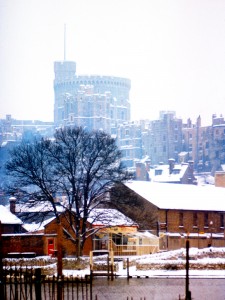
Windsor Castle in the snow, January 1963. We lived in the town below the castle. Photo by Tony Eppstein.
The winter of 1962-63, my first in England, was the coldest Britain had known in over 200 years. First the fog crept in. My nostrils tightened against the thick yellow damp, sour with the smoke of coal fires and diesel trains. As November wore on and the cold deepened, fog froze into hoar frost that thickened daily on the power lines until they resembled sagging ropes.
Snow began the day after Christmas. All January it snowed and froze and snowed again. Transportation systems ground to a halt. The River Thames froze over. The inside wall of our apartment kitchen, wet since November and already black-mottled with mildew, glazed over with ice. On the outsides of buildings, ice congealed around plumbing outlet pipes like candle wax dripped from lighted candles. Water pipes froze and burst. The clatter of buckets as the water truck made its rounds became a familiar sound in our Windsor neighborhood.
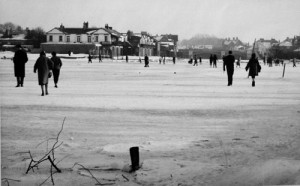
Windsorians walk on the frozen Thames.
A view towards Windsor Bridge photographed on 24 January 1963. Image from the Royal Windsor Website
A side benefit of the bad weather was that we got to know our neighbors. Here’s a letter I wrote to my parents:
23 January 1963
I think we must be drifting into another ice age – the weather here continues to get colder every day. All sources of fuel – coal, gas electricity, and even paraffin, are in short supply, and everyone is fighting a losing battle against frozen pipes and general seizing up.
We had our fun and games over the weekend. We were woken fairly early on Saturday morning to terrific shouting and hammering on the door. We staggered out, to find that the Hoopers were being flooded out – their kitchen was an icy pond, and water was pouring through the light fitting in the ceiling. We turned off all the taps we could find, someone somehow found a plumber, and after he, Tony and Peter [Hooper] had hacked their way through the several inches of ice outside the front gate, and even more ice on top of the valve, they managed to get the mains off. Next thing we tried to get in touch with Stan Fricker, from whose flat the water was coming – he was at work, and we had visions of him coming home to a complete flood. By the time he arrived we had swished most of the water out of the kitchen, and had got all the heaters we could find in to dry it out. So we all trooped up into Stan’s bathroom, which is directly above the Hoopers’ kitchen and, to our surprise, found very little trace of water. We bailed the solid chucks of ice out of the bath, which had been frozen up for days, and Stan and Tony got to work on the floorboards, which were suspiciously damp. They managed to raise a couple, and discovered that the break in the pipe was right underneath the bath, which had been very recently closed in and modernised with plywood, fresh paint, and what not. A brute to get at.
The next thing to do was to find a plumber to fix it – easier said than done – “Oh no, love, we couldn’t possibly let you have one till Monday.” I don’t know how many pennies we spent on phone calls over the weekend, but at fourpence a call we went through several shillings. But we still couldn’t get a plumber till Monday, and late Monday afternoon at that. So we borrowed buckets of water from a neighbor, and puddled along with little dribs of washing where necessary, keeping most of it for drinking. It was pretty messy. At least in the old days they had facilities in keeping with such conditions – but try using a modern-type lav when you have nothing but half a bucket of dirty water to flush it with. That was the first thing that Margaret [Hooper] did, with great ceremony, when the plumber finally managed to get the water on again for us on Monday evening. Our lav had to wait a few hours longer – the remaining water in it had got so iced up that it had to be very carefully thawed before anything would move. And we still can’t have a bath – the outlet pipes in the bathroom are frozen up and, according to the plumber, that will just have to wait till the thaw.
The kitchen outlet, which comes down in the same place – down the outside wall on the coldest side of the house, now shows signs of doing the same thing, which would be choice. I am shortly going to do some washing, and hope that the gallons of hot water from the tub will deter it. Still, we could always throw our slops out the window – if we could unfreeze the windows enough to open them, that is. Might as well be really primitive.
We are getting rather advanced ideas on the proper requirements of a house in this climate – they do not agree very much with the conventional buildings most people live in here. Definitely central heating, double glazing, and interior plumbing.
